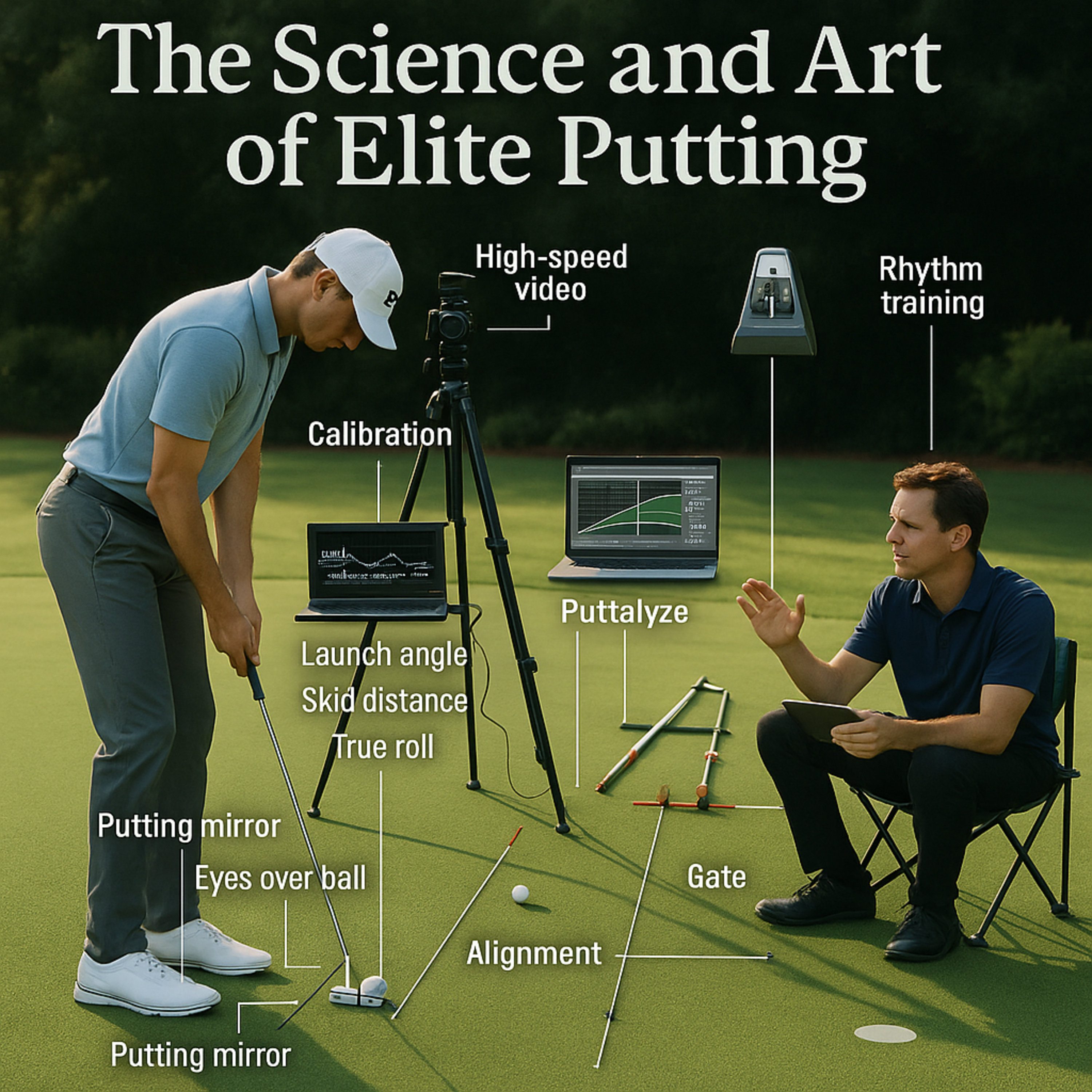#304 The Science and Art of Elite Putting
- Author
- Golf247.eu
- Published
- Sun 03 Aug 2025
- Episode Link
- https://podcasters.spotify.com/pod/show/puttin-pro/episodes/304-The-Science-and-Art-of-Elite-Putting-e36atcv
Modern putting has evolved beyond intuition and guesswork. Today, it blends precise data analysis, biomechanics, and psychological insights—turning the green into a laboratory of measurable performance. Elite coaches and players now rely on advanced tools like Puttalyze and Quintic to refine every aspect of the stroke, from alignment to launch angle, rhythm, and mental composure.
From Diagnosis to Mastery
The path to elite putting begins with comprehensive diagnostics, mirroring Tour-level standards. High-speed video reveals flaws in setup and stroke, such as a putter aimed slightly right despite proper ball alignment. Puttalyze simulates ideal roll paths using physics-based models, calculating Puttalyze, Distance Point, and Target Speed based on green speed (Stimp), slope, distance, and desired pace. Quintic, meanwhile, measures how the ball actually behaves post-impact—capturing launch angle, skid distance, spin, and when true roll begins.
This bridge between theory and execution is the gold standard. When a player consistently shows a 1.2° open face angle on straight putts beyond two meters, these systems reveal it clearly. Such deviations are hard to detect by feel alone—but they’re visible in the data and correctable through targeted practice.
Rhythm: The Missing Link
While data drives diagnosis, rhythm powers performance. Defined as motion without hesitation, rhythm governs the consistency of stroke, speed, and distance control. Many players fall into the trap of an imbalanced motion—slow backswing, rushed follow-through—which causes putts to come up short or blow past the hole.
A solution? The three-beat metronome method:
- Start
- Top of Backswing
- Impact
This cadence fosters a smooth, instinctive stroke. As coach Henrik Jentsch puts it, “Athletic movement begins with intent—not thought.” When intent is clear, the body generates energy naturally. This “pre-loaded” muscular activation lasts just a few seconds—enough time to execute before doubt creeps in.
Vision and Perception
Even the best mechanics can’t save a player who’s poorly aligned. Visual distortions—caused by improper posture, ball position, or putter design—lead to misalignment despite apparent precision. For example, many players aim right of target due to eye line errors or insufficient alignment aids. Solutions include putting mirrors to ensure eyes are over the ball and selecting putters with longer top-line markings for improved aim.
Objective Feedback, Targeted Training
Once faults are identified, drills like the Gate Drill, Logo Line Drill, or Yardstick Drill help build repeatable movement patterns. These exercises recalibrate stroke path, face angle, and launch direction with immediate feedback. Over time, this forges confidence built on reliable mechanics, not wishful thinking.
Handling Pressure with Poise
Data may sharpen technique, but rhythm maintains composure. Under tournament stress, golfers often suffer from delayed execution or a break in rhythm—two signs of mental interference. Even the best-trained mechanics falter when second-guessing creeps in.
The antidote is pre-stroke commitment: define your rhythm, trust your read, and go. No hesitation. As pressure mounts, rhythm becomes not just a physical asset—but a mental shield against overthinking.
